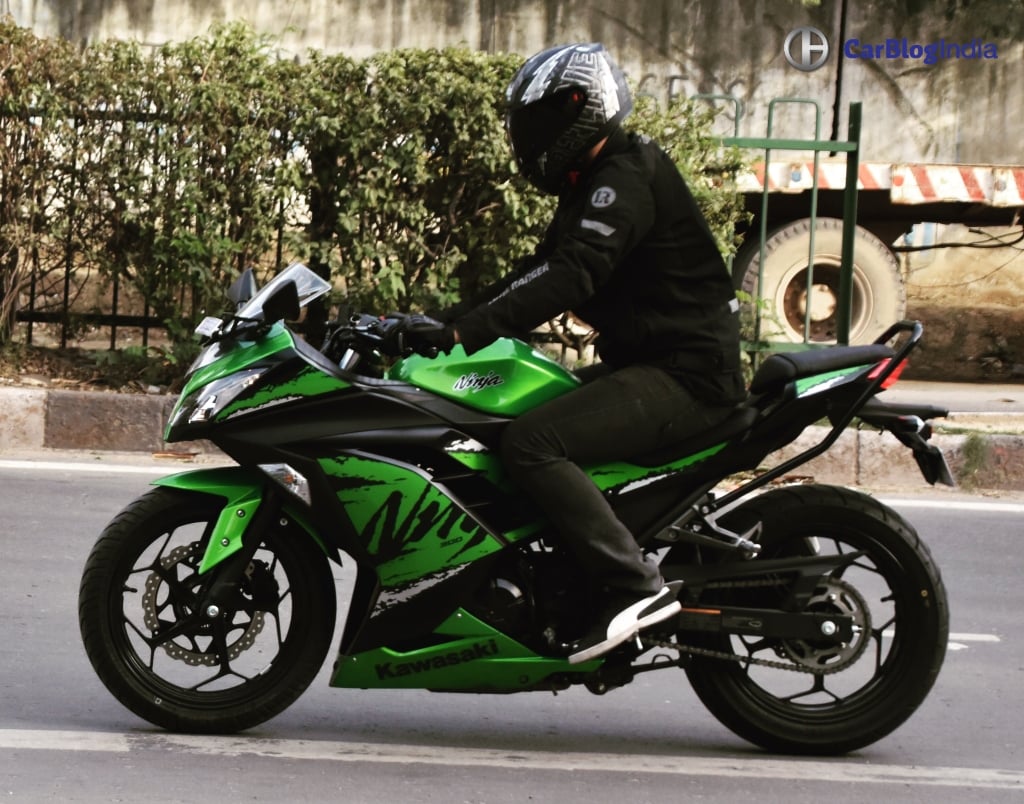Kawasaki is a brand name that is very popular among people, especially the older generation who knew Kawasaki-Bajaj bikes. From that time to now, the Japanese two-wheeler manufacturer has grown much bigger and more premium in India.
In 2018, the heavily localized Kawasaki Ninja 300 was launched, which is still a CKD unit. The engine and chassis were imported from Thailand, but rest of the parts were locally sourced, accounting up to 40% localization.
However, with reduced prices and the inclusion of dual-ABS, its sales automatically boosted. Earlier, it was priced at Rs 3.60 Lakhs, which was a CBU.
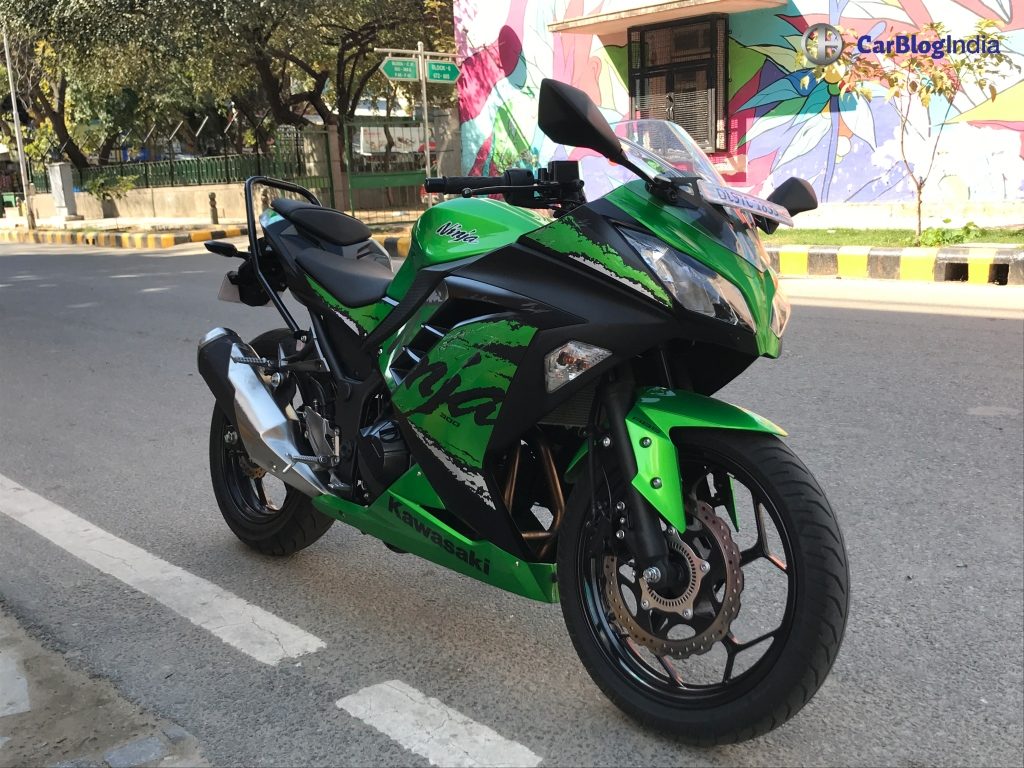
Meanwhile, we decided to take the baby Ninja for a quick review to check its performance, dependability, handling and if it qualifies as a daily superbike.
Kawasaki Ninja 300 – Design
Despite being the baby Kawasaki, it still looks a lot like the bigger ones. We got the legendary Green colour bike, which I
At the front, it gets the nicely carved twin headlamps, below the tall windscreen. The LED blinkers have been fit on either side fairing, which looks refreshed. That means no sticking out indicators at the front.
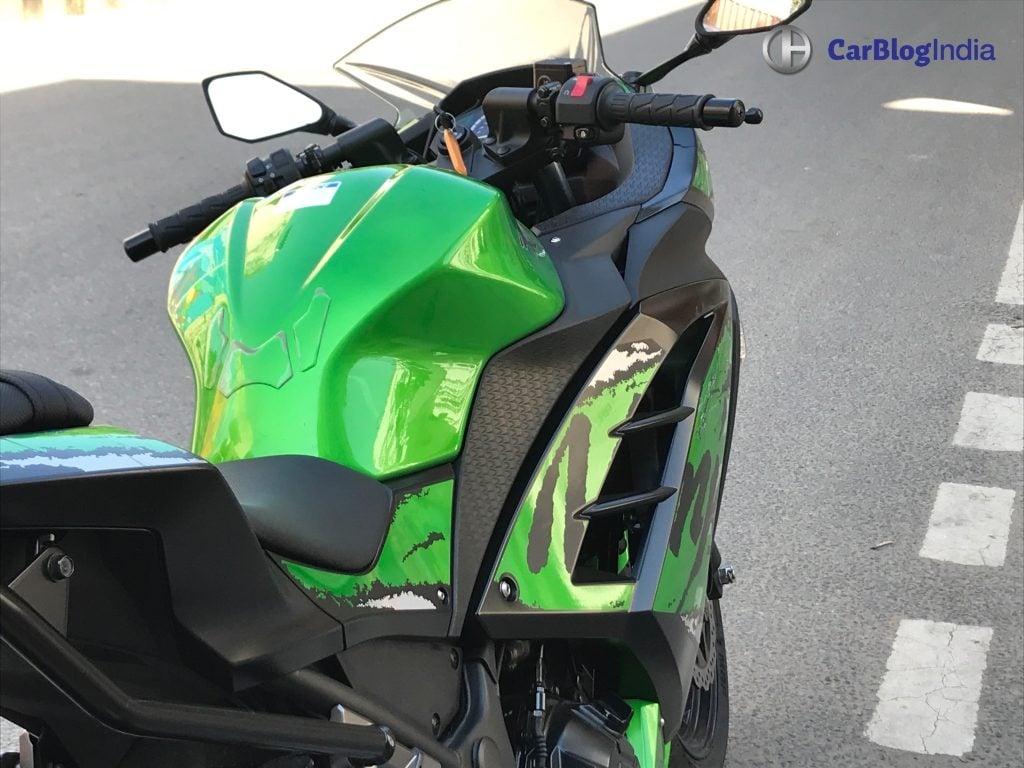
The new Ninja 300 gets bold ‘Ninja’ decals with sporty graphics in Green and Black dual-tone paint job. Despite having loud decals, it looks somewhat better than the older Kawasaki models.
The air vents on the side make it wider and add more to the racy behaviour of the bike. Despite being plastic materials, the parts have been fitted properly. No unwanted rattling or noises from the body experienced.
The exhaust muffler looked a bit outdated for me but actually doesn’t look that bad. One thing that looks a tad disappointment is the grab rail at the back. It flows right from the frame covering the tail lights.
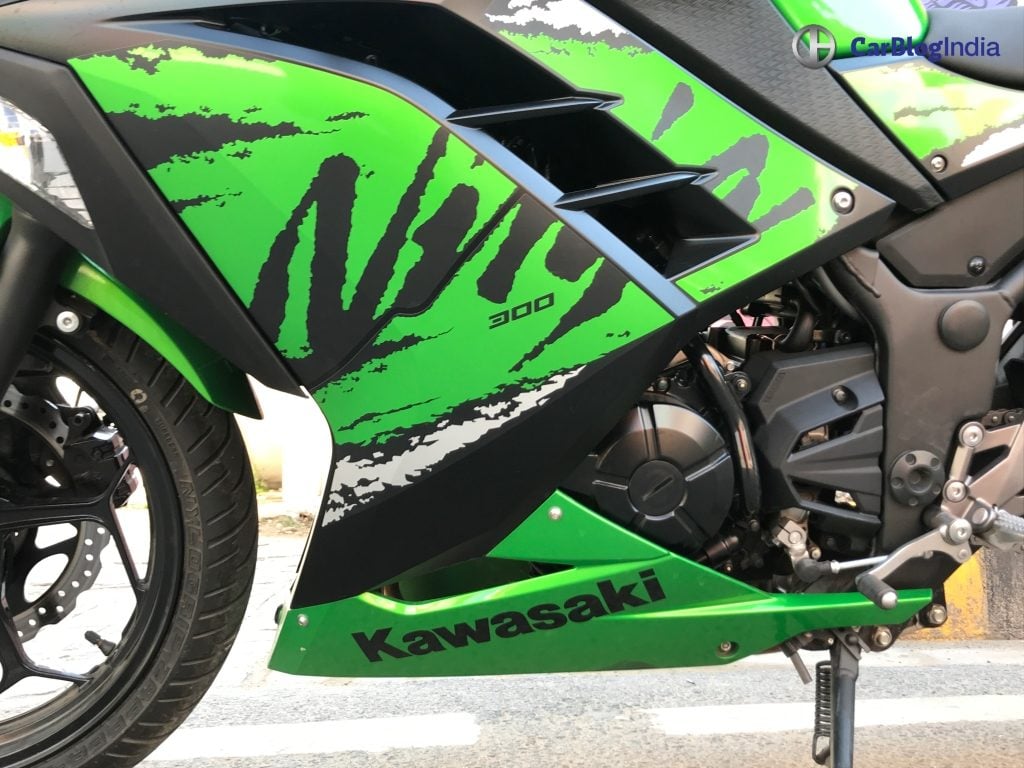
Summing up, it definitely looks better than the 2017 version, which came with colourful lines running from the tail light to the front fairing. There’s nothing I want to change about its design, probably the crude grab rail.
Kawasaki Ninja 300 -Engine and Performance
Kawasaki has made sure the Ninja’s goodwill still stays in the minds of bike enthusiasts, from the smallest engine to the biggest one. The Ninja 300 behaved like a pure Kawasaki, no bullshit, just performance and a thrilling ride.
I got to drive it over a 15 km highway distance and the rest in the city traffic. Surprisingly, it is a perfect city commuter; well behaved and filled with the right amount of juice needed for a quick overtake.
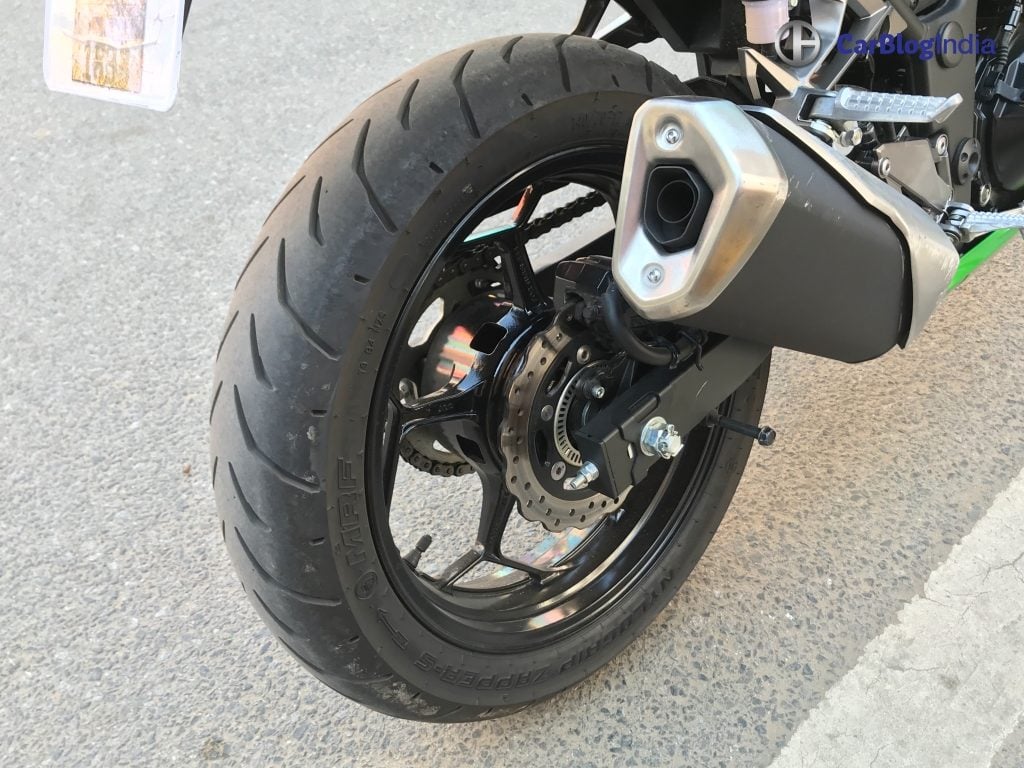
Ninja 300 gets a good torque distribution over all RPMs. Right from the starting 2000-3000 RPM, there wasn’t a moment where it felt like torque is low. As you twist the throttle towards the red line, the torque keeps pouring smoothly, without any lag.
However, the fun starts above 5000 RPM. It feels a sudden but linear power push between the 5000-8000 RPM. Above 8000 RPM, the power band kicks in displaying the true colours of this bike.
Kawasaki Ninja 300 was cruising easily at 120-130 km/hr range. I got to push the bike up to 140 km/hr, which could have gone a little bit up by 4-5 km/hr. Still, it felt like an easy task for the bike, showing no signs of fatigue.
Another thing I adore about the baby Hulk is its excellent engine refinement. Even nearing to the redline, the vibrations are minimal. Only the handlebar gets minor vibrations nearing the 10000 RPM mark.

Lastly, the race-derived Assist and Slipper Clutch is ‘Kaafi’ light. It won’t trouble your foot after a long ride.
Did I forget to tell you? Ninja 300 is equipped with a twin-cylinder engine, that pretty much justifies the above-mentioned Pros.
Kawasaki Ninja 300 gets a 296cc parallel twin-cylinder engine, that is capable of delivering 39 BHP at 11000 RPM and 27.8 Nm of peak torque at 10000 RPM.
Kawasaki Ninja 300 – Mileage
As we said, Ninja 300 is a decent commuter. Over a run of 120 kms, including a small stretch of highway and moderate traffic, it delivered 35 kmpl, which is
Kawasaki Ninja 300 – Comfort
Kawasaki Ninja 300 is a sportsbike and you would definitely expect a race-tuned stiff suspension. However, in this case, the suspension is balanced, a bit towards the softer side. That said, it easily tackles damaged roads and regular potholes. Big potholes might shake you up a bit but won’t give you spine-chilling jerks.
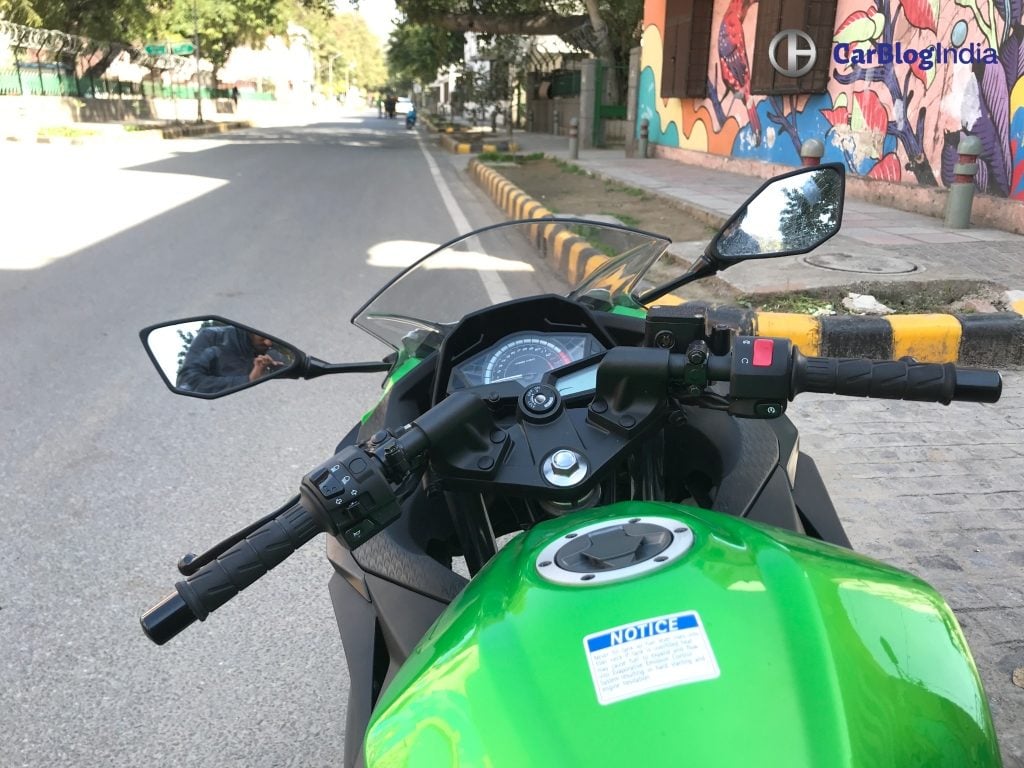
Kawasaki Ninja 300 – Ride and Handling
I found the seat to be cushioned nicely for the rider as well as for the pillion. Interestingly, an awful looking grabrail has also been provided for the pillion to hold on to.
Ninja 300 gets clip-on handlebars, which are not low placed. Yes, it offers a dedicated riding position, but not a fully crouched position, like the higher capacity Ninjas. However, it is good enough to get your knee down for a clean corner. Need not to mention, but the footpegs are rear-set.
The diamond frame is race-tuned, offering good cornering capabilities. The slightly crouched position offers a relaxed ride with not too much pain for the wrists. Tipping the scales at 179 kgs, it felt a bit heavy. The longer wheelbase makes it feel bigger.
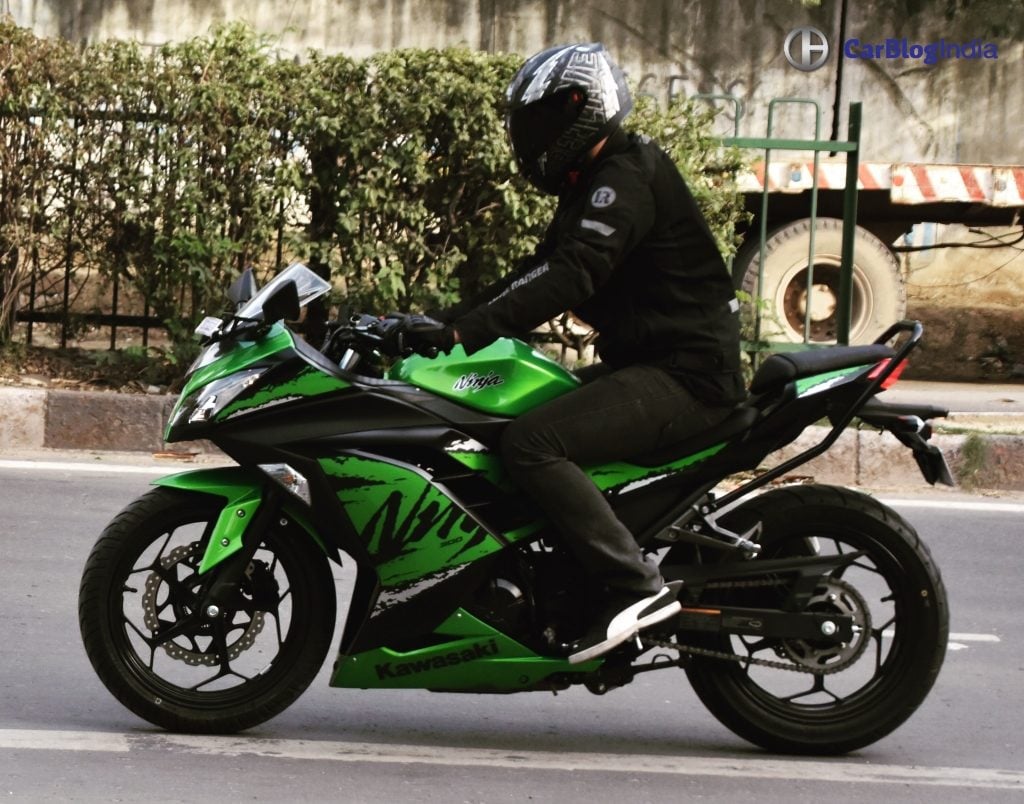
The Ninja 300 is equipped with MRF Zapper Tires. Over heavy showers in the Delhi NCR region, I got to test the grip of the tires. The grip is adequate, but not the top-notch, to be precise. For a better experience, I would suggest stickier and premium road-spec tires.
As far as the city commuting goes, the zip-zapping is easy and agile. The longer wheelbase limits the small-gap overtaking, but actually, it isn’t much noticeable.
Kawasaki Ninja 300 – Brakes
Kawasaki Ninja 300 gets the localized Endurance dual-channel ABS paired to a single 296mm disc at the front and a 220mm disc at the back. The bite is good enough and hard braking would not make you lose confidence. Although, I felt the bite of the brake not
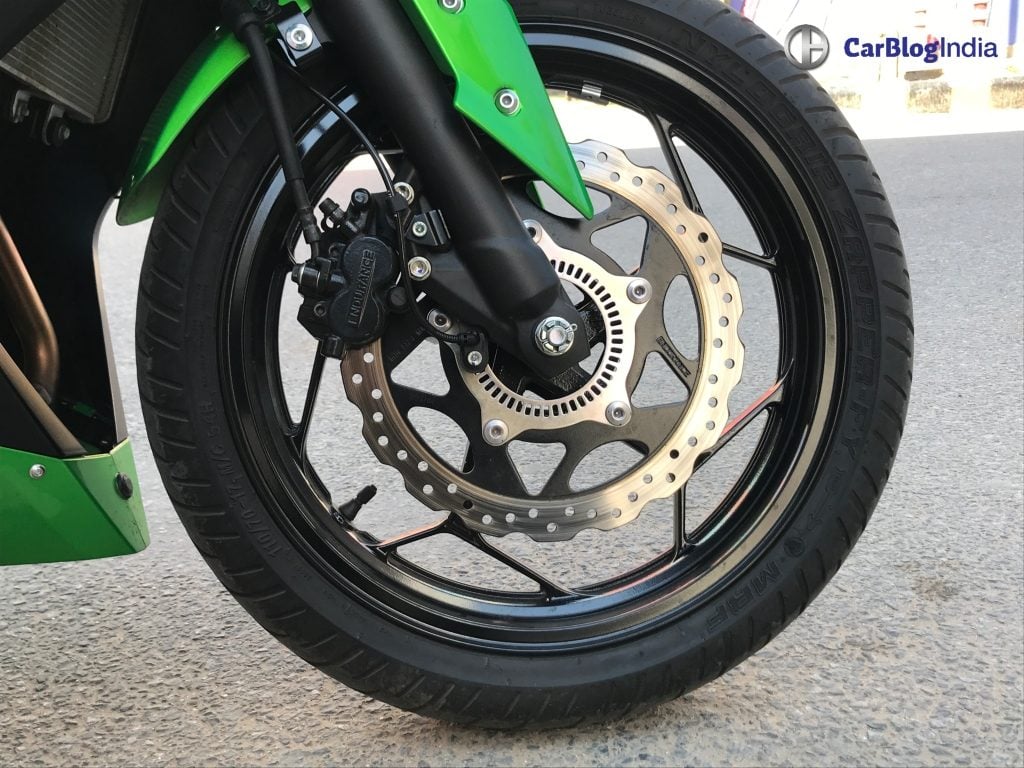
Kawasaki Ninja 300 – Build Quality and Features
In a bid to price the Ninja 300 competitively, Kawasaki launched the locally assembled version in 2018. The chassis and frame remain the same CKD units, but the equipment has been locally sourced. A lot of plush quality plastic is used onboard.
However, we found the fits and finishes to be much above average. We doubt the durability of the plastic material over a fair period of time.
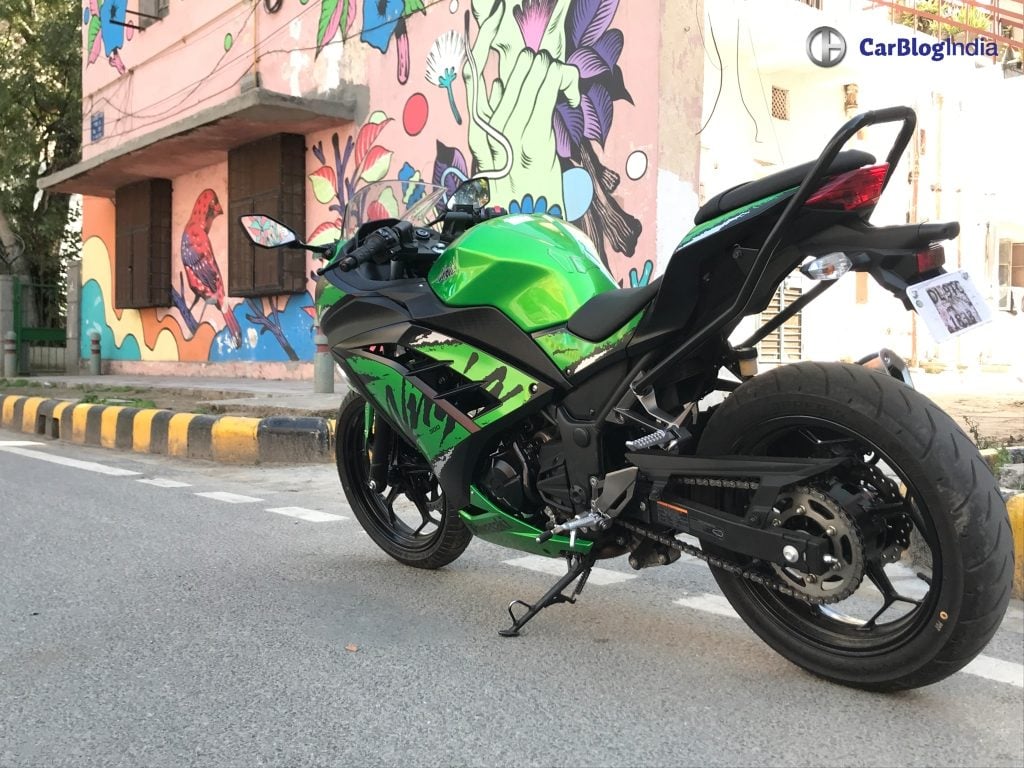
It gets an analogue tachometer, a digital screen which reads out the speed, trip meter, odometer and fuel reading. Personally, I fancy analogue tachometer in big bikes, which instantly caught my attention. The digital screen feels a bit outdated and there is no riding range and lap timer information.
Kawasaki Ninja 300 – Price and Verdict
With the locally-sourced parts, the price of Kawasaki Ninja 300 was reduced by nearly Rs 50000, to Rs 2.98 Lakhs (ex-showroom India). For an entry-level Kawasaki motorcycle, the pricing is now perfect and highly-highly competitive.
It competes with the likes of BMW G 310 R, Yamaha R3 and KTM RC 390. Amongst these, only R3 is another twin-cylinder motorcycle but demanding a premium of another 50000 bucks. The G 310 R is of the same price, but a naked roadster. Lastly, the KTM is cheaper and more powerful, but a twin-cylinder engine is always more better than a single-cylinder engine.
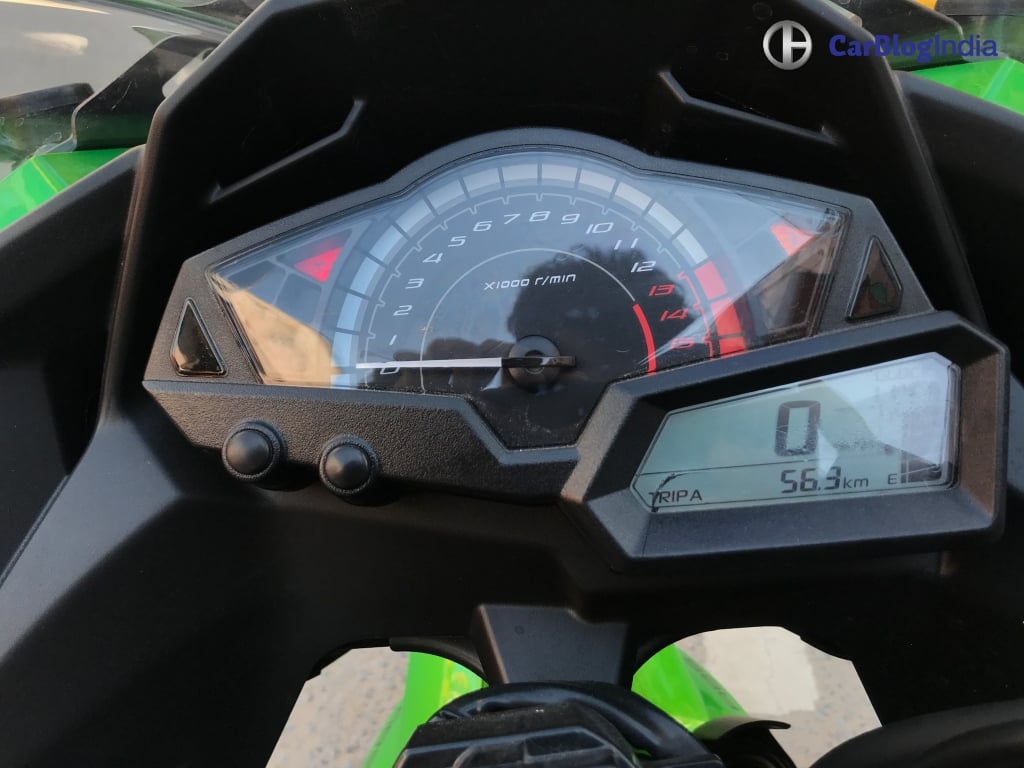
Summing up, the Kawasaki Ninja 300 is the best you can get, if you are a beginner rider and plan for a sportsbike under Rs 3 Lakhs. It tick marks all the boxes – Comfort, Performance and Handling. For an experienced rider, he might feel some shortcomings in the handling, maybe.

